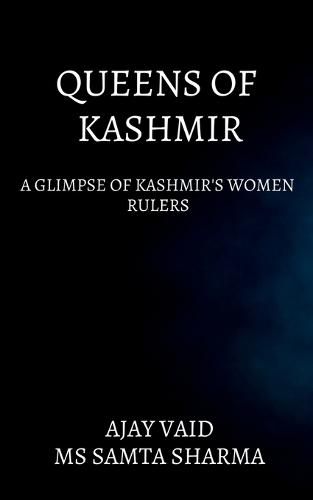Readings Newsletter
Become a Readings Member to make your shopping experience even easier.
Sign in or sign up for free!
You’re not far away from qualifying for FREE standard shipping within Australia
You’ve qualified for FREE standard shipping within Australia
The cart is loading…






This title is printed to order. This book may have been self-published. If so, we cannot guarantee the quality of the content. In the main most books will have gone through the editing process however some may not. We therefore suggest that you be aware of this before ordering this book. If in doubt check either the author or publisher’s details as we are unable to accept any returns unless they are faulty. Please contact us if you have any questions.
Women are typically usually portrayed as subtle, gentle, and submissive, but those who believe that women cannot be recognized for their valor are unkind and naive. However, they are typically treated as a homogeneous group on the periphery of history, unimportant to the main historical narrative. However, when the sources are examined, a completely different picture emerges. In Kashmir, women have had more equal status with men than in other parts of the world. Many times, women have stood alongside men as powerful rulers, regents of princes, vivacious militia commanders, diplomats. There are ample shreds of evidence in Rajtarangini as regards the laudable women of Kashmir. In his work Rajtarangini, Kalhana, a famous poet from the 12th century, mentions three queens who ruled Kashmir: Yasovati of the Gonanda dynasty, Sugandha (904-906 A.D.) of the Utpala dynasty, and Didda (1003-1320 A.D.) of the Lohara dynasty. However, Kota Rani (1338-1339 A.D.) of the IInd Lohara dynasty was the fourth and final woman to rule. Jona Raja, a Kashmiri historian, has given Kota Rani significant recognition in his ‘Dvitiya Rajtarangini, ’ which is a continuation of Kalhana’s Rajtaringini. This work is a small attempt to acknowledge women’s valor, strength, and magnanimity, which have been clearly visible but are still invisible.
$9.00 standard shipping within Australia
FREE standard shipping within Australia for orders over $100.00
Express & International shipping calculated at checkout
This title is printed to order. This book may have been self-published. If so, we cannot guarantee the quality of the content. In the main most books will have gone through the editing process however some may not. We therefore suggest that you be aware of this before ordering this book. If in doubt check either the author or publisher’s details as we are unable to accept any returns unless they are faulty. Please contact us if you have any questions.
Women are typically usually portrayed as subtle, gentle, and submissive, but those who believe that women cannot be recognized for their valor are unkind and naive. However, they are typically treated as a homogeneous group on the periphery of history, unimportant to the main historical narrative. However, when the sources are examined, a completely different picture emerges. In Kashmir, women have had more equal status with men than in other parts of the world. Many times, women have stood alongside men as powerful rulers, regents of princes, vivacious militia commanders, diplomats. There are ample shreds of evidence in Rajtarangini as regards the laudable women of Kashmir. In his work Rajtarangini, Kalhana, a famous poet from the 12th century, mentions three queens who ruled Kashmir: Yasovati of the Gonanda dynasty, Sugandha (904-906 A.D.) of the Utpala dynasty, and Didda (1003-1320 A.D.) of the Lohara dynasty. However, Kota Rani (1338-1339 A.D.) of the IInd Lohara dynasty was the fourth and final woman to rule. Jona Raja, a Kashmiri historian, has given Kota Rani significant recognition in his ‘Dvitiya Rajtarangini, ’ which is a continuation of Kalhana’s Rajtaringini. This work is a small attempt to acknowledge women’s valor, strength, and magnanimity, which have been clearly visible but are still invisible.